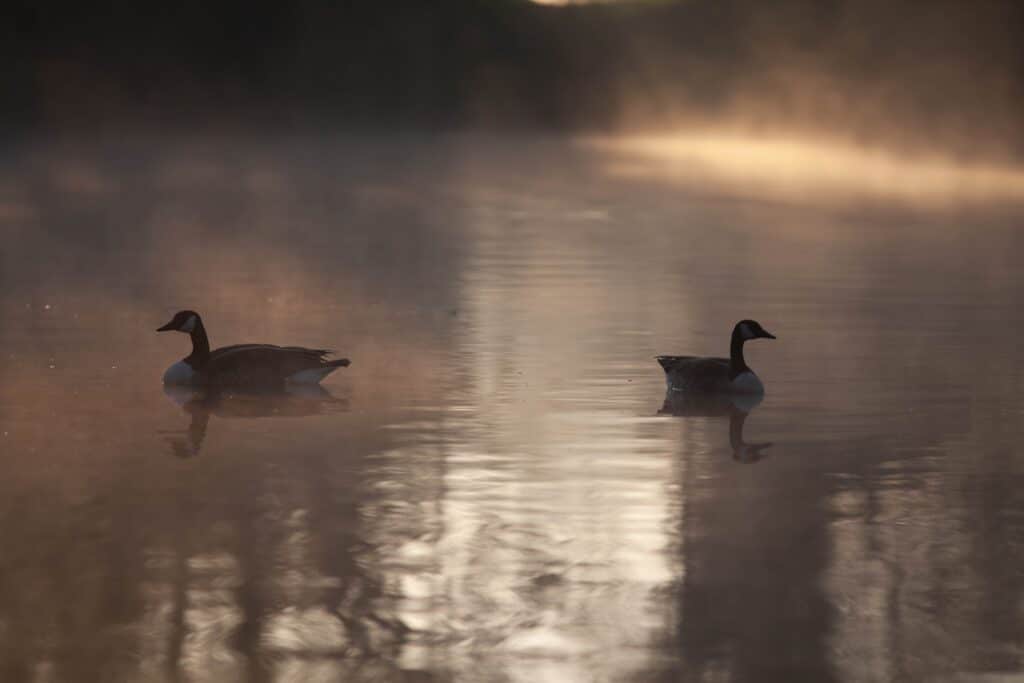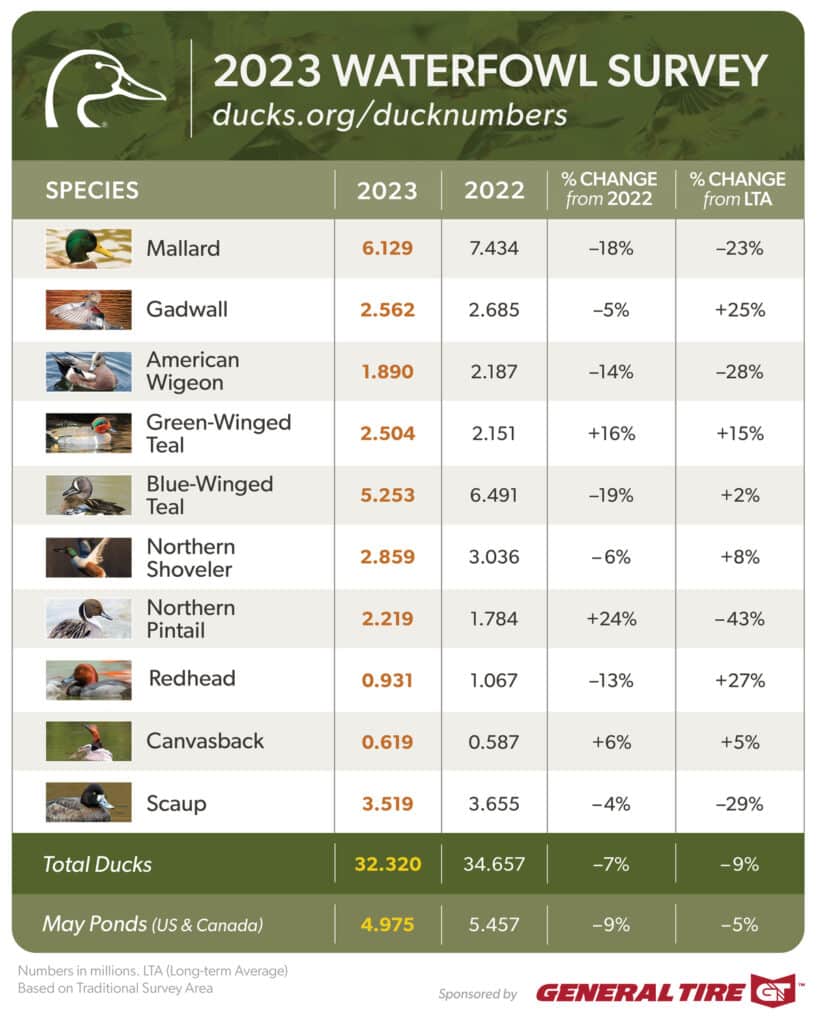Reprinted from Ducks Unlimited
On August 18th, The U.S. Fish and Wildlife Service released its report on 2023 Waterfowl Population Status based on surveys conducted in May and early June by FWS, Canadian Wildlife Service and other partners.
Total populations were estimated at 32.3 million breeding ducks in the traditional survey area, a 7% drop from 2022’s estimate of 34.7 million and 9% below the long-term average (since 1955).
Also included in the report are breeding population estimates for 6 common duck species groups from the Eastern Survey Area, covering eastern Canada and the northeastern states from Virginia to Maine, as well as status updates on populations of geese and swans.
DU Chief Scientist Dr. Steve Adair said the overall numbers reflect a complex relationship between waterfowl, weather, and habitat availability.
“These results are somewhat disappointing, as we had hoped for better production from the prairies following improved moisture conditions in spring of 2022.. Last year’s nesting season was delayed with April snowstorms and May rains, which likely impacted overall production. In the past, we have seen population growth lag moisture conditions as small, shallow wetlands recover from the lingering impacts of severe drought.”
Key Takeaways
- Populations of most species remain healthy and near the long-term averages, which should produce a respectable flight for waterfowl hunters and waterfowl enthusiasts to enjoy this fall and winter.
- Total pond numbers in the U.S. and Canada were estimated at 5 million, which was 9% lower than the 2022 estimate of 5.5 million and slightly below the long-term average of 5.2 million.
- Mallard and American wigeon populations declined. Estimates for mallards were down 18% from 2022 and 23% from their long-term average. American wigeon were down 14% from 2022 and 28% from their long-term average. These declines are a concern for DU scientists and amplify the need for sustained investments in conservation, monitoring, and targeted science.
- Pintails provided a noteworthy bright spot. Population estimates increased 24% over the record low from last year. Although the survey showed that overall duck populations remain healthy, it also told a story of continuing drought in the western Canadian prairie provinces, which will limit production for ducks that traditionally settle in those landscapes.
- Subsequent surveys will paint a more complete picture of how well duck populations are recovering from the severe drought of 2020–2021.
- Highly pathogenic avian influenza – Based on reports from waterfowl managers and wildlife disease experts of partner agencies, DU scientists don’t expect a significant impact on duck populations from the HPAI outbreak of 2022.
“Lower than expected numbers in this year’s survey reinforce the need for wetlands conservation as habitat continues to be lost across the continent,” said Ducks Unlimited CEO Adam Putnam. “For over 86 years, DU has focused on North American wetlands and grasslands that sustain healthy waterfowl populations, and support clean water for people, too. As much as we have accomplished, these data confirm we have more work to do.”
What’s Next
“We remain concerned about the continuing loss and degradation of habitat in the prairies and long-term impacts on carrying capacity and productivity,” Adair said.
Regardless of pond counts and precipitation, waterfowl need productive habitat across their lifecycle to breed, migrate, and winter successfully. Ducks Unlimited, in partnership with the U.S. Fish and Wildlife Service and numerous other governmental, nonprofit and corporate partners, recently surpassed 16 million acres of protected or restored waterfowl habitat.
Ducks Unlimited continues to establish innovative research projects to better understand the needs of waterfowl and better guide conservation efforts. And landowners are a crucial component of healthy landscapes. Farmers and private landowners – with help from voluntary incentive-based programs in the U.S. Farm Bill – can help conservation organizations produce healthier wetlands and grasslands.
The united effort to protect wetlands has paid off over many decades: a recent State of the Birds report shows waterfowl and other wetland-dependent birds are the only species to increase in numbers since the 1970s, primarily because of conservation efforts.
To invest in tomorrow’s wetlands and waterfowl populations, Ducks Unlimited, Ducks Unlimited Canada, Ducks Unlimited de Mexico, and Wetlands America Trust have joined forces to launch Conservation For a Continent, a historic $3 billion capital campaign. Conservation For a Continent is one of the largest North American fundraising efforts to support habitat protection and restoration. Learn more about this effort.
View the full 2023 Waterfowl Population Status report from the U.S. Fish and Wildlife Service.
Source
Ducks Unlimited. (2023). 2023 Duck Population Numbers. Ducks Unlimited. Retrieved from https://www.ducks.org/conservation/waterfowl-surveys/2023-duck-numbers


